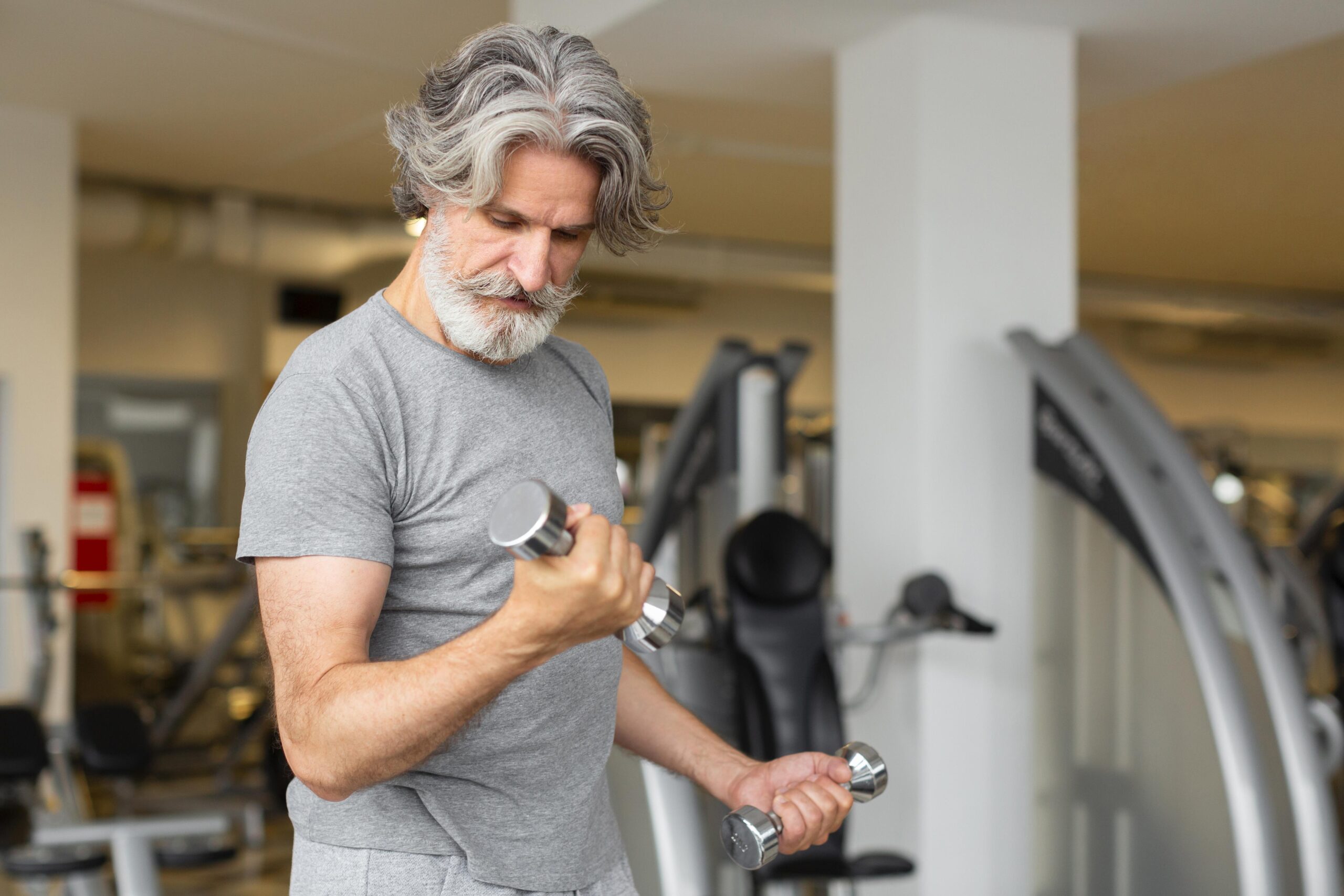The cardiovascular system, which is made up of the heart, blood arteries, and blood, is crucial in supplying the body’s tissues with oxygen and nutrition. The effectiveness of this system is increased by regular cardiovascular activity, improving cardiovascular fitness and lowering the risk of cardiovascular illnesses. This comprehensive guide aims to provide valuable insights into assessing cardiovascular fitness, various tests and exercises, and effective strategies to improve overall cardiovascular health. By understanding these concepts, individuals can optimize their fitness routines and achieve better long-term health outcomes.
Understanding the Cardiovascular System
The cardiovascular system, also known as the circulatory system, is responsible for transporting oxygen, nutrients, hormones, and waste products throughout the body. It consists of the heart, which acts as a pump, propelling oxygen-rich blood to the organs and tissues via arteries. The veins return deoxygenated blood back to the heart for oxygenation. This intricate system is crucial for comprehending the importance of cardiovascular fitness assessment.
Importance of Cardiovascular Fitness
Cardiovascular fitness, also referred to as cardiovascular endurance or aerobic fitness, is the ability of the cardiovascular system to efficiently supply oxygen and nutrients to the muscles during physical activity. It is a key indicator of overall health and fitness. Regular cardiovascular exercise offers numerous benefits, including improved heart function, reduced risk of cardiovascular diseases, enhanced energy levels, weight management, and better mental well-being. Assessing and monitoring cardiovascular fitness is essential to track progress and make informed adjustments to exercise routines.
Assessing Cardiovascular Fitness
Maximal Oxygen Consumption (VO2 max) Test
The VO2 max test is the de facto method for determining cardiovascular fitness. The maximum amount of oxygen a person may use while engaging in vigorous exercise is measured. This examination, which is frequently conducted in a lab setting using specialised tools, offers useful knowledge about a person’s cardiovascular function. Recent research has emphasised the value of VO2 max as a predictor of mortality and the risk of cardiovascular disease.

Submaximal Exercise Tests
Submaximal exercise tests are conducted at a lower intensity than the VO2 max test. These tests utilize heart rate and perceived exertion to estimate cardiovascular fitness. Examples include the Astrand-Rhyming Cycle Ergometer Test and the Rockport Walk Test. These tests provide a practical and accessible way to assess cardiovascular fitness.
Field Tests
Field tests offer convenient and accessible methods for assessing cardiovascular fitness outside of a laboratory setting. Examples include the 1-Mile Walk Test, Cooper 12-Minute Run Test, and the Step Test. Recent studies have shown the validity and reliability of field tests in assessing cardiovascular fitness. These tests can be performed in various environments, making them suitable for a wide range of individuals.
Effective Cardiovascular Exercises
Aerobic Exercise
Cardiovascular fitness is built on aerobic exercise. It uses a lot of muscles and causes a sustained increase in heart rate. Running, biking, swimming, and brisk walking are a few aerobic exercise examples. Exercises like interval training, HIIT, and circuit training are efficient techniques to increase endurance and cardiovascular fitness. mattis, pulvinar dapibus leo.
Cross-training
To engage various muscle groups and prevent overuse problems, cross-training entails incorporating a range of activities. People can increase their cardiovascular fitness while also increasing their total muscular strength, flexibility, and balance by combining aerobic exercises with strength training, yoga, or Pilates.
vs. Sports and Recreational Activities
Sports and leisure time activities offer a fun method to increase cardiovascular fitness. Sports like soccer, basketball, tennis, dancing, and hiking combine cardiovascular activity with social contact to make health more enjoyable and long-lasting.
Strategies to Improve Cardiovascular Fitness
To Progressive Overload
Progressive overload is a fundamental principle of exercise training. It involves gradually increasing the intensity, duration, or frequency of cardiovascular exercise to continually challenge the cardiovascular system. Recent studies have emphasized the importance of progressive overload for long-term improvements in cardiovascular fitness.
Consistency and Regularity
Cardiovascular exercise consistency and regularity are essential for fostering adaptation and enhancing cardiovascular fitness. Aim for at least 150 minutes per week of aerobic activity at a moderate intensity or 75 minutes at a high intensity. By exercising consistently, the body is able to adjust to the demands of the activity and gain the advantages of increased cardiovascular fitness.
vs. Heart Rate Monitoring
Exercise heart rate monitoring is a useful tool for ensuring optimal intensity. Heart rate-based training has been shown to be useful in enhancing cardiovascular fitness in recent research. People can modify their workouts to maximise the cardiovascular advantages and prevent overexertion by maintaining a target heart rate zone.
Incorporating High-Intensity Interval Training (HIIT)
Short bursts of vigorous exercise are interspersed with times of active recuperation in high-intensity interval training (HIIT). HIIT has grown in popularity because of its quick, considerable improvement in cardiovascular fitness. This kind of exercise strains the cardiovascular system and encourages effective oxygen use.
Proper Nutrition and Hydration
In order to sustain cardiovascular health and improve exercise performance, proper nutrition and hydration are essential. A balanced diet that contains a variety of nutrient-rich meals supports healthy cardiovascular function throughout the body. Dehydration can have a negative effect on performance and cardiovascular efficiency, thus staying hydrated is crucial for best cardiovascular function while exercising.
Sleep and Stress Management
Sufficient sleep and effective stress management are essential for maintaining cardiovascular health. Inadequate sleep and chronic stress can contribute to cardiovascular disorders. Prioritizing quality sleep and implementing stress reduction techniques, such as meditation, deep breathing exercises, and engaging in hobbies, positively impact cardiovascular fitness.
Gradual Progression and Periodization
Implementing a structured approach to training is crucial for improving cardiovascular fitness. Gradual progression involves incrementally increasing the intensity and volume of exercise over time. Periodization involves dividing training into specific phases, each with a distinct focus, to optimize adaptations and prevent plateaus. This approach helps individuals safely and effectively improve cardiovascular fitness while minimizing the risk of overtraining and injuries.
Conclusion
Maintaining overall health and lowering the risk of cardiovascular illnesses require evaluating and increasing cardiovascular fitness. People can check their cardiovascular fitness levels and track progress using a variety of tests, including VO2 max testing and field evaluations. Effective cardiovascular exercise, such as cross-training, sports, and aerobic activity, increases cardiovascular health and improves fitness. People can improve their cardiovascular fitness and live healthier lives by putting tactics like progressive overload, consistency, heart rate monitoring, HIIT, and good diet into practise. It is essential to seek advice from medical doctors or fitness professionals before beginning any new exercise programme.
